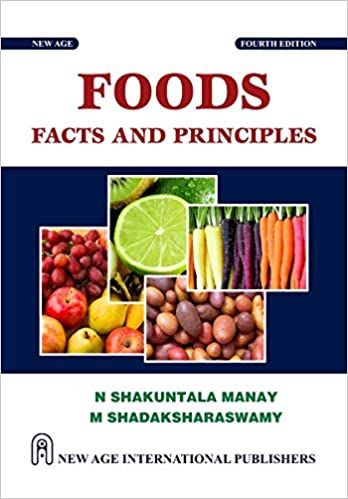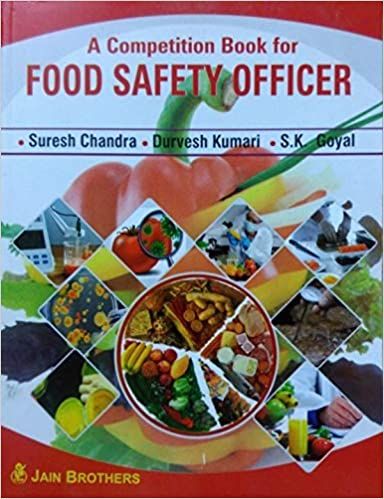Water soluble vitamins, functions and their forms
Among the vitamins; ascorbic acid, thiamin, riboflavin, niacin, vitamin B6, folic acid, biotin, pantothenic acid and vitamin B12 are classified as water soluble vitamins. The sources of vitamins in general are from plants, animals, micro-organisms and fortified food products. The common feature of these vitamins is their solubility in water. Most of the water soluble vitamins cannot be stored in the body and hence their regular intake is of utmost importance.
a) Thiamin: Different forms of thiamin are free thiamin, thiamine monophosphate and thiamine pyrophosphate or thiamine diphosphate, thiamine triphosphate, adenosine thiamine triphosphate and adenosine thiamine diphosphate. Thiamin pyrophosphate is the active form. Their activation requires phosphorylation by kinases into the diphosphate and triphosphate esters. Thiamin pyrophosphate is essential for the conversion of pyruvate to acetyl CoA to generate energy. It is a co-enzyme for transketolase in the oxidation of glucose by the hexose monophosphate shunt. Most of the circulating thiamin is bound to proteins such as albumin and erythrocytes. Their absorption is by active transport or passive diffusion.
b) Riboflavin: It is essential in tissue respiration, growth and is a transporter of hydrogen ions.
Different forms of riboflavin in the system are free riboflavin, flavin adenine dinucleotide or FAD and flavin adenine mononucleotide or FMN. The co-enzyme forms of riboflavin that is FAD and FMN are the active forms which involve the action of flavokinase. These forms are essential in the initial oxidation of fatty acids and several intermediates of glucose metabolism. Their activation requires hydrolytic cleavage of free riboflavin from its flavoprotein complexes by various phosphatases. As thiamin, riboflavin is also bound to plasma proteins such as albumin. Its absorption is by a carrier mediated process which requires adenosine triphosphate (ATP).
c) Niacin: It is essential in glycolysis, fat synthesis and tissue
respiration. The different forms of niacin are nicotinic acid and nicotinamide. It is very essential for energy production and metabolism of cells. It is part of the pyridine nucleotide coenzymes nicotinamide adenine dinucleotide (NADH) and nicotinamide adenine dinucleotide phosphate (NADPH) which facilitate transport of hydrogen. These molecules are co-substrates for more than 200 enzymes involved in metabolism of carbohydrates, amino acids and fatty acids. It can be synthesized from tryptophan. Most of the foods have NADH and NADPH which undergo digestion to release the absorbable forms nicotinamide and nicotinic acid. These forms are absorbed in the intestine by carrier mediated facilitated diffusion. Niacin in the plasma is not bound to any molecule and is taken up by tissues through passive diffusion. Few tissues have transport system for nicotinic acid. In the tissue, it is re-converted to NADH and NADPH.
d) Pantothenic acid: It is essential in the intermediary metabolism of carbohydrate, fat and protein. It is an integral part of co-enzyme A (CoA) which is involved in energy production from the macronutrients and acyl carrier protein (ACP) which is used in synthesis reactions. CoA is important in energy metabolism for pyruvate to enter the tricarboxylic acid cycle (TCA cycle) as acetyl-CoA, and for α-ketoglutarate to be transformed to succinyl-CoA in the cycle The CoA and ACP forms are found in foods and their absorption requires hydrolysis to phosphopantetheine and later the conversion to pantothenic acid. It is absorbed by passive diffusion and active transport in the jejunum. It is transported in its free acidic form in the plasma and taken up by diffusion into erythrocytes. Later the peripheral tissues take up pantothenic acid by a sodium dependent active transport and in few tissues by facilitated diffusion.
e) Pyridoxine or Vitamin B6: It comprises of three forms; the alcohol derivative pyridoxine, the aldehyde derivative pyridoxal and the amine pyridoxamine. Pyridoxal phosphate is active form. It is formed from pyridoxal by phosphorylation catalyzed by pyridoxal kinase, however the absorption into the jejunum and ileum is in their de-phosphorylated form. Pyridoxal phosphate are bound to protein and act as prosthetic group or co enzyme of enzymes which are involved in transamination, decarboxylation, transsulfuration, desulfuration and non-oxidative deamination reactions, primarily in metabolism of proteins. Pyridoxal phosphate is coenzyme for enzymes that are involved in the synthesis of heme, neurotransmitters, catecholamines and coenzyme A synthesis. It is essential in the biosynthesis of niacin from tryptophan and unsaturated fatty acids from essential fatty acids.
f) Folates: Dietary folates are absorbed as monoglutamate methylated forms which are 5methyltetrahydrofolic acid and 5-formyltetrahydrofolic acid. Absorption occurs at the jejunum by active transport or by passive diffusion when ingested in large amounts. Dietary folates exist as polyglutamyl form with several glutamate residues whereas folic acid, the synthetic form is a oxidized monoglutamate form. Polyglutamates are hydrolyzed by conjugases to corresponding monoglutamates for intestinal absorption. Once they are absorbed, they are converted into 5methyltetrahydrofolate which is a major circulating form of folates in the body. The different forms of tetrahydrofolic acid act as enzyme co-substrates in synthesis reactions in the metabolism of amino acids such as methionine, formation and maturation of red and white blood cells; and for biosynthesis of RNA and DNA by single carbon atom donors or acceptors. It is vital during early fetal development.
g) Vitamin B12: Vitamin B12 functions in two metabolically active forms adenosylcobalamin and methylcobalamin, however other forms are cyanocobalamin and hydroxycobalamin. They play a major role in metabolism of propionate, amino acids and single carbons. They are synthesized by the microflora of the gut but cannot be absorbed. A deficiency causes impaired cell division through arrested synthesis of DNA therefore they are essential for the biosynthesis or nucleic acids and nucleoproteins. In the food system, it is usually bound to proteins and is released by the action of pepsin. It combines with cobalophilins in the stomach and moves to small intestine. The cobalophilins detach from cobalamin by hydrolysis. Cobalamin later gets bound to intrinsic factor which is crucial since majority of B12 is absorbed by this active transport.
h) Biotin: Biotin in foods is largely bound to proteins and are released by proteolytic digestion to yield free biotin, biocytin or biotiny peptide. By the action of biotinidase, biotin is released from biocytin and biotiny peptide. Free biotin is absorbed in the proximal small intestine primarily by carrier-mediated diffusion and transported into the plasma. Biotin is mainly a carboxyl carrier and acts by addition or removal of CO2 and is involved in the gluconeogenesis and fatty acid synthesis. It removes the NH2 group from amino acids.
i) Ascorbic acid: Ascorbic acid or vitamin C functions in oxidation-reduction reaction. Humans receive ascorbic acid from their diet which is absorbed by active transport and passive diffusion. Two forms of vitamin C exist in the system, dehydroascorbic acid which is the oxidized form and the reduced form ascorbate or ascorbic acid, the former is better absorbed. It is involved in the synthesis and production of collagen, neurotransmitters serotonin and norepinephrine, interferons conferring immunologic potential and carnitine. It is an efficient antioxidant and prevents oxidative damage. It converts ferric to ferrous state of iron thus facilitating iron absorption overall and from the non-heme sources. It is also important in wound healing.








